GUESSING GAME ESTIMATING FISH WEIGHTS
By Helen Horrocks
Being able to accurately estimate the weight of a fish has to be one of the most understated yet highly revered skills a fisher can have. It’s a hallmark of experience, and the best at it are the salty sea dogs who have strung up countless twenty-pounders and seen dozens of marlin hit the deck. On the other hand, newbies who get it way off are ridiculed: “A twenty pounder? Bro, you’ll be lucky if it goes ten!”
Boating a big fish always fuels the friendly rivalry on board, with everyone taking their best guess heading to the weigh-in, the only prize being bragging rights for guessing closest to the actual weight.
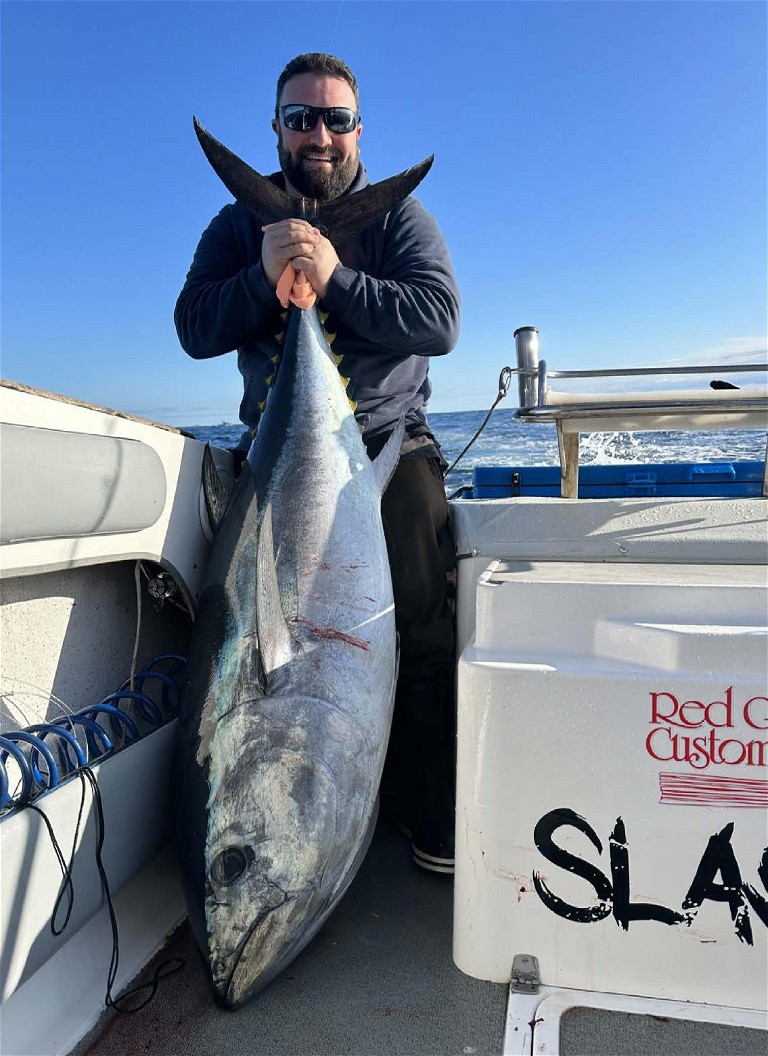
Comparisons help. Helen figured about three 20L water containers would fit into this southern bluefin tuna. It weighed 61kg.
With billfish, there’s the magical 90kg mark to achieve, ensuring your weigh station experience is one of congratulatory handshakes and clinking beer bottles, rather than whispers of the word “piper” and mutters of “shoulda’ tagged it” from the back. The perceived shame of boating a ‘nonqualifying’ marlin weighs heavy on many a green gamefisher’s mind as he tries to figure out if the fish will make the grade or not.
Tuna and swordfish seem to prove especially hard to estimate, probably because they’re seen less frequently than marlin or inshore fish. The winter Waihau bluefin fishery has exposed New Zealand gamefishers to bigger numbers of substantially-sized tuna than they would ever hope to see during the summer months, so it’s no great surprise that a lot of inexperienced guesses are off the mark.
To be fair, it can be difficult in the heat of the moment, with the adrenalin pumping and spirits high. The good news is, there are some pretty reliable ways to up your guessing game.
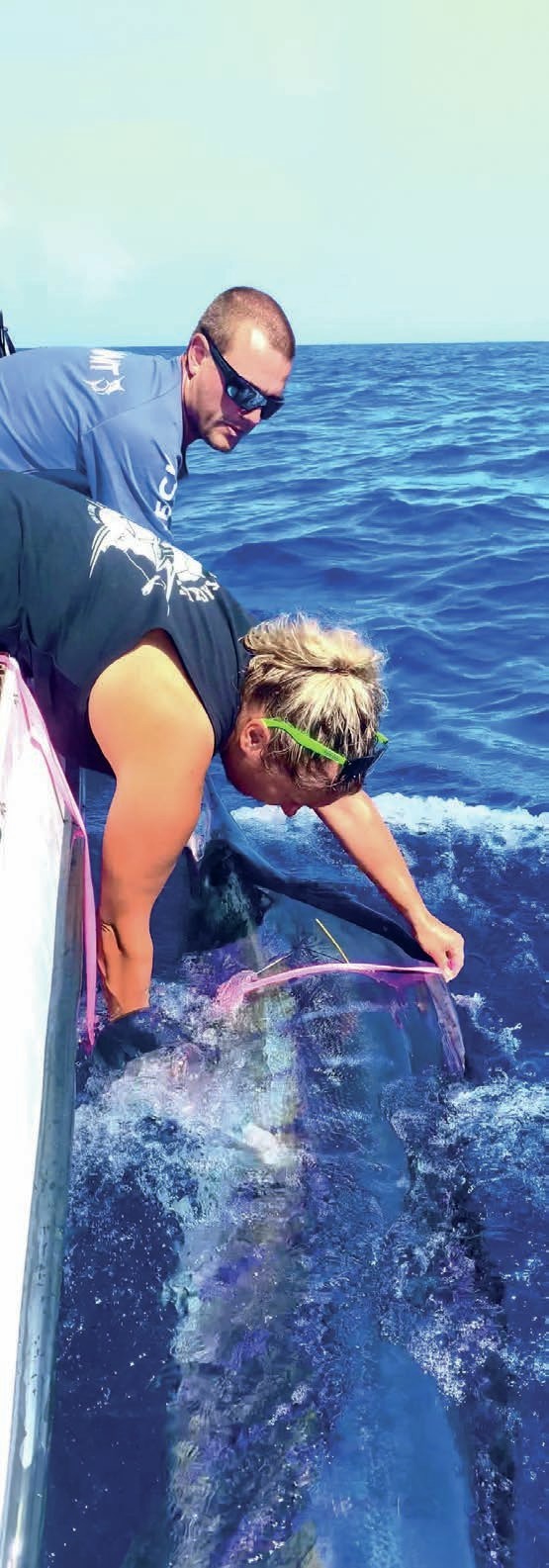
Measure the girth as well as the length and use the fish weight formula for a more accurate weight estimate.
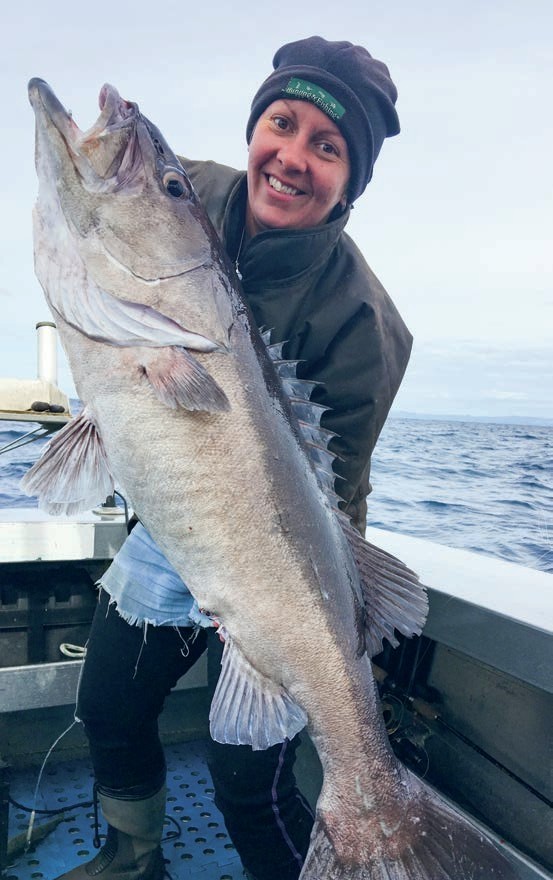
Not quite a bag of cement? Hāpuku are pretty easy to judge when you pick them up. If you can’t pick it up, you know it’s a good one!
Compare it with what you know
The easiest way to estimate a fish is to mentally break it down into objects of a known weight. We all know roughly what a 1kg bag of sugar looks and feels like, or a pound of butter. How many of those would ‘fit’ into your snapper?
For bigger fish, I usually think of a 20L water container, visually chunking my fish from head to tail to see how many containers I can fit into its mass. Tradies might be more familiar with a 20kg bag of cement. That’s a good one to think of when you’re lifting a kingfish or hāpuku.
Getting someone to lie down next to a really big fish can help, too – provided they’re truthful about their own weight. But you should be all right there because everyone knows fishers never lie.
Length-to-weight charts
The next step up in accuracy is to measure the length of your fish and use a published length-toweight chart for that species. It’ll tell you the average weight for a fish of that length. They’re usually pretty accurate as they’re based on research involving many reallife examples. But they don’t take into account fish condition, which can make a big difference.
There are published lengthto-weight tables for snapper, kingfish, tuna, marlin and probably many other species which you can find online.
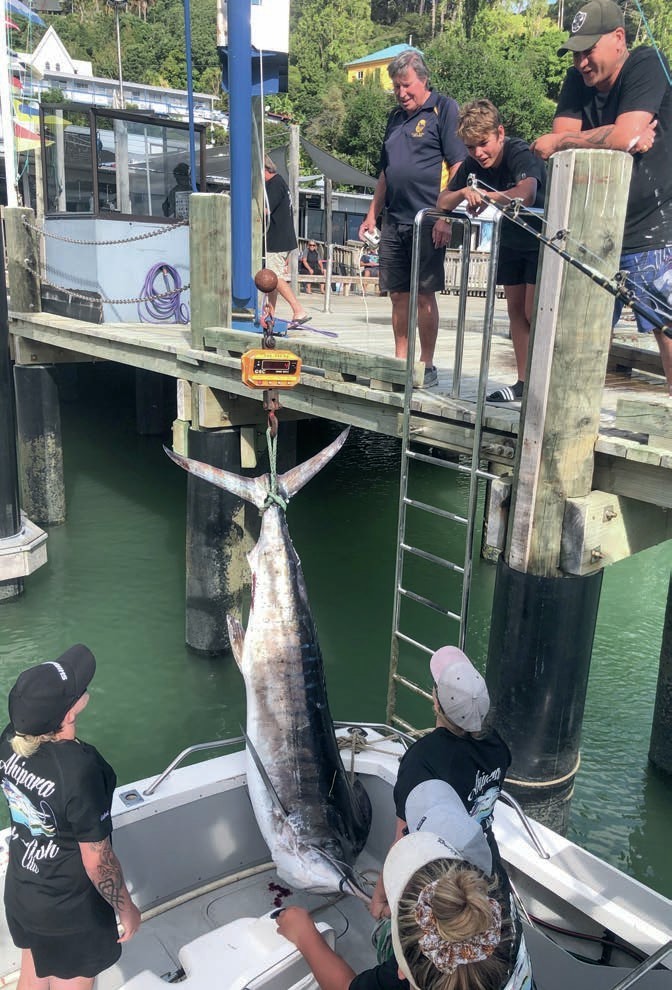
Estimates will always have a margin of error – there’s no substitute for weighing on certified scales at a fishing club. Below: Measuring length can give you an idea of weight – just use a length-to-weight chart for the species in question. A 115cm kingfish is about 20kg.
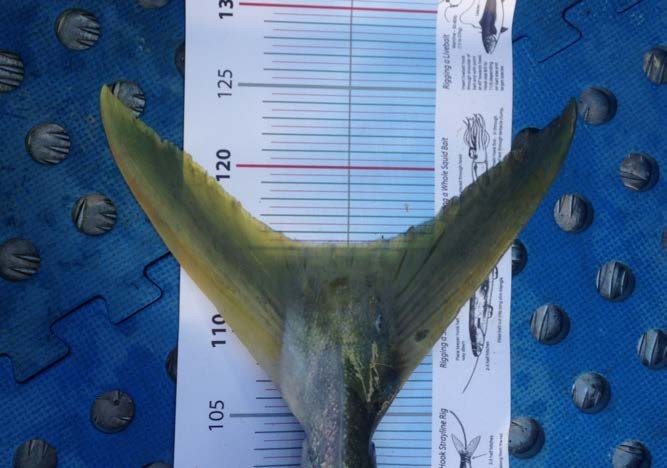
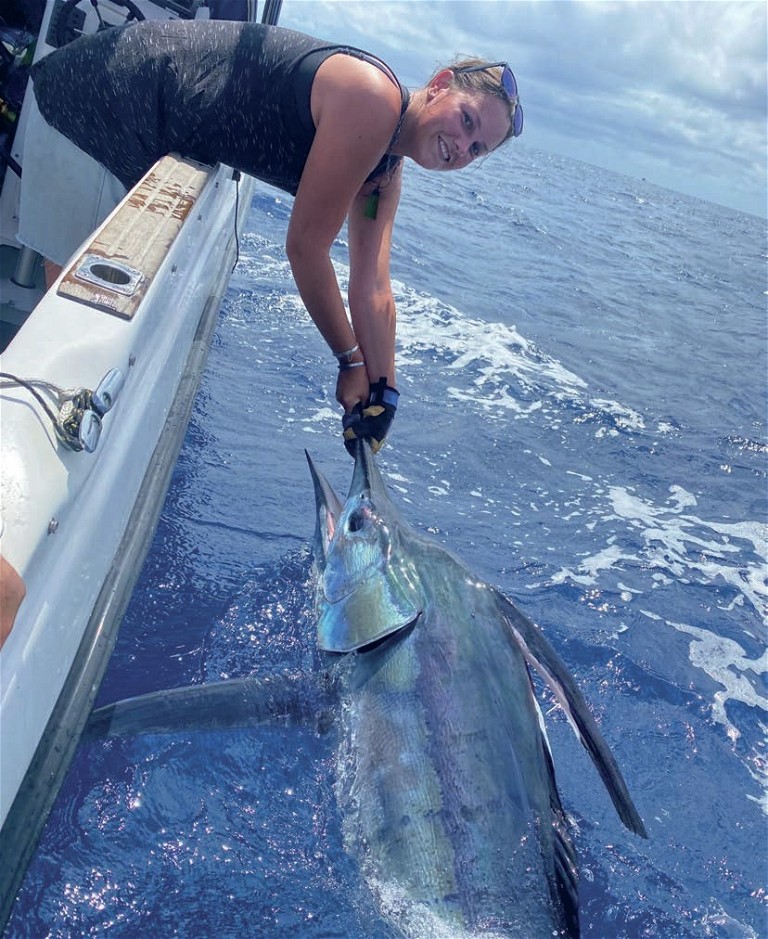
To tag or not to tag? A striped marlin will usually go 90kg with a fork length of at least 2.4m.
Marlin fishers tend to learn pretty early in their career that a striped marlin generally needs a fork-length (from tip of lower jaw to V of tail) of at least 2.4 metres to make the 90kg mark. For this reason, I keep a 3m tailor’s tape clearly marked at 2.4m in my kit for easy boatside measure-ups. It’s handy if you’re in a tournament and you need a qualifying weighed fish to win, otherwise if it’s in doubt we’ll usually let it swim.
The fish weight formula
To take fish condition into account, you can apply the fish weight formula which uses both the length and girth measurements of the fish. Bear with me non-maths people, this next bit might fry your brain. But keep reading because I’ll also give you an easy way to calculate it.
The mathematical formula for estimating the weight of saltwater fish is the fork length (in inches) multiplied by the square of the girth (in inches) divided by 800, to give a weight in pounds (lbs), or (L x G2 / 800).
If your mind is melting at the thought of calculating that, not to mention converting from imperial to metric, don’t worry. You can use the online calculator at FishWeight. app (full disclosure: I created this myself because my brain was melting, too). It lets you enter your length and girth measurements in centimetres, and get an estimated weight in kilos. Too easy.
At the end of the day, the old adage, “If you don’t weigh it, don’t say it,” rings true. There’s no substitute for an official weigh on certified scales at your local fishing club. But if you’re releasing a fish and just want to be able to tell people with reasonable certainty how big it was, or you’re keen to get an idea before you get to the weigh station, you can use the methods above to level up your guessing game. And maybe one day we’ll both be salty old sea dogs who can accurately eyeball a fish down to the pound, too.
Weight calculator
An easy-to-use and accurate weight calculator specific to Kiwis’ most popular inshore species (snapper, kingfish, kahawai, and trevally) is available for free online at www. fishingcomp.co.nz/length-weight-calc
It gives an estimate of weight based on species, condition factor, and length. CLICK HERE to check it out: